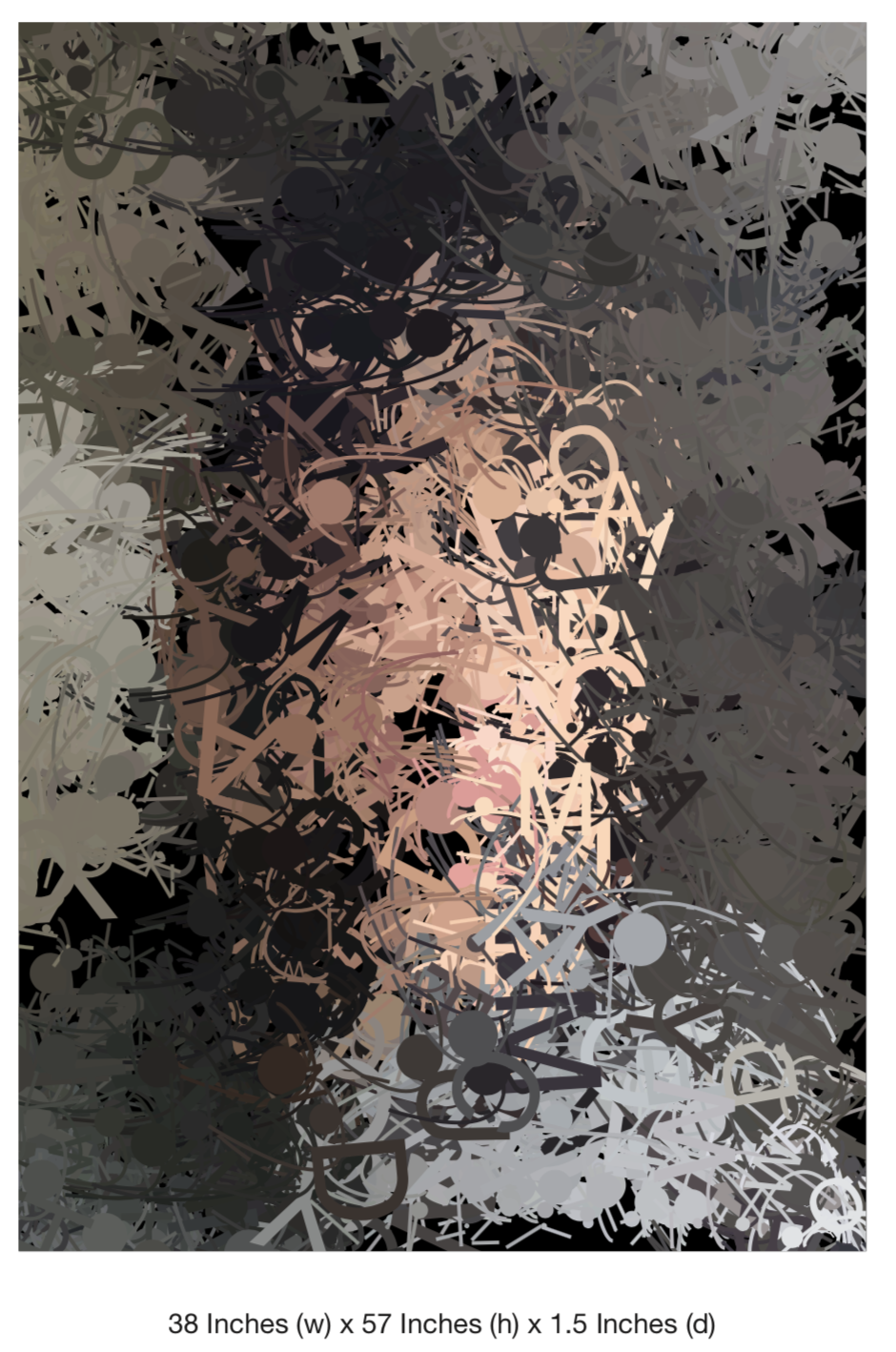Selfie is defined as photography that one has taken of oneself, typically one taken with a smartphone or webcam and shared by social media. A selfie is a form of art. Over 1 million selfies are now taken every day. Selfies are not always as spontaneous as they seem. They can be a communication tool like any other that can be manipulated for purposes. A typographic selfie + CODE is an extension of Selfie + CODE which is a collection of generative selfie series by using computer algorithms and libraries. Typography is defined as what languages look like. The algorithmic processes expend the concepts of traditional self-portraits to expressive visual communications conveying thought or feeling as visual styles. The visual style was inspired by Impressionism, which is a 19th-century art movement that captures a moment, such as Claude Monet’s Sunrise, for instance, by using a smartphone to capture a moment, and Expressionism, expressing inner troubles and feelings of anxiety rather than technical skills or beauty, which is a traditional goal of art. The artist started taking her generative selfies, Selfie + CODE, in 2015, to raise awareness of Asian female faculty being isolated and marginal in a predominantly white institution. Her generative selfies have captured psychological moments to express those individual identities are devalued and deconstructed by a homogeneous institution and an ethnocentric group in the United States. It has been shared by social media. The virtual supporting system at Facebook, “Like”, by her diverse mentors and friends, helped her to persist and survive in a regionally isolated and exclusive community. Eventually, It has brought her psychological reconciliation and healing to succeed in dealing with difficulties. Her visual research by using generative selfies has been extended to a medium, typography, as a title, Typographic Selfie + CODE. Now she is working with diverse typefaces to create generative selfies to explore expressive and extended typography.
